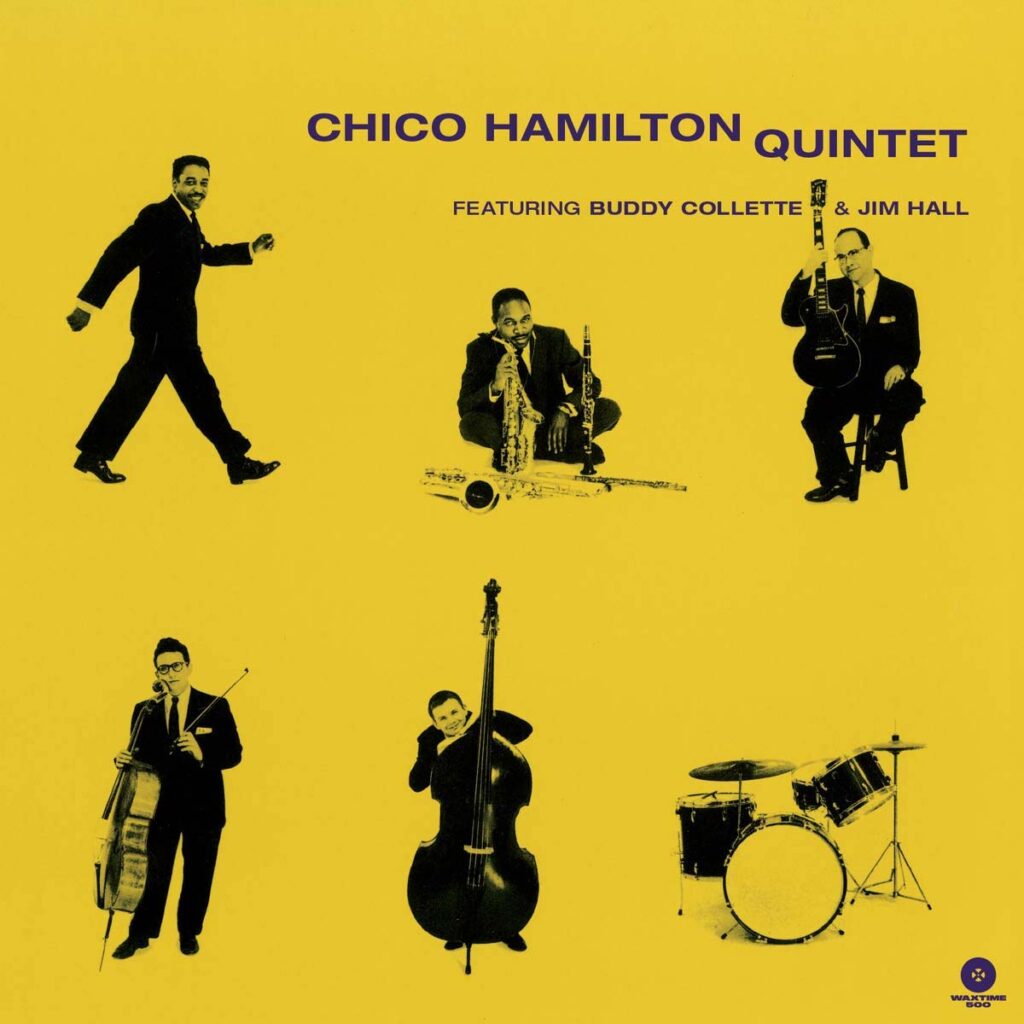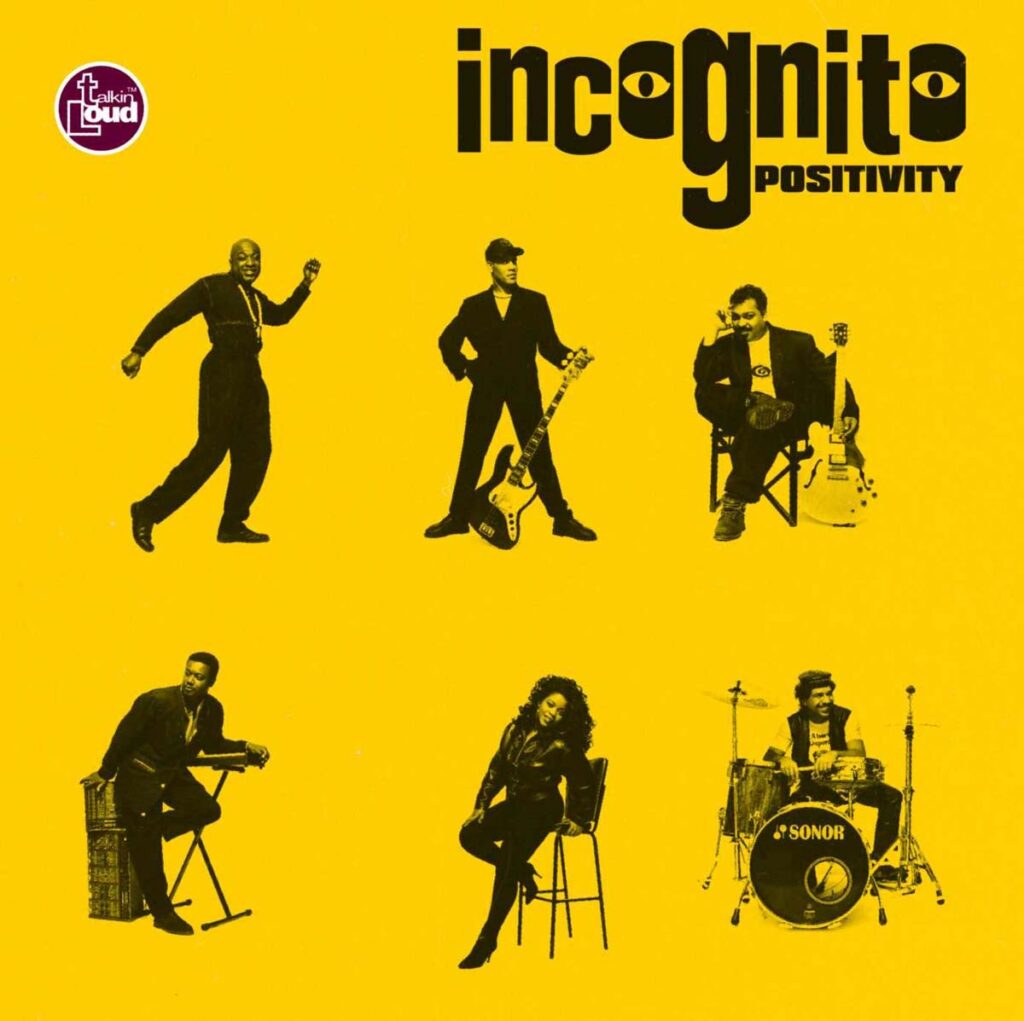Sometimes the best ideas are born out of necessity. When no piano was available on the stage of the jazz club “The Haig” in Los Angeles in 1952, Gerry Mulligan simply invented a new jazz aesthetic on the spot: To at least hint at the missing chords, the two wind players (Mulligan and Chet Baker) began to accompany each other.
Enthusiastic critics spoke of a “mixture of Bach and Dixieland” – it was the birth of so-called West Coast jazz, a contrapuntal, experimental variant of cool jazz. The drummer in this experiment was Chico Hamilton: “The Mulligan-Baker Quartet was formed in my living room, so to speak,” he liked to say. Buoyed by its success, Hamilton then founded his own West Coast Quintet in 1955. The most striking thing about this band was its almost chamber music sound. The wind player (Buddy Collette) played less saxophone, preferring the more classical-oriented wind instruments flute and clarinet. The cellist (Fred Katz) was more of a classical than a jazz musician anyway. And the electric guitarist (Jim Hall) cultivated a soft, entirely unaggressive tone. The cover of the debut album immediately reveals this special instrumentation – incidentally, the famous William Claxton took the photos of the musicians.
For the Chico Hamilton Quintet, composition and arrangement were at times more important than improvisation. “We have real compositions, otherwise there would be no reason for a cello,” said Jim Hall. “The cello keeps us together.” However, the band insisted that their compositions were born out of the spirit of jazz improvisation: One person improvises something, another turns it into an arrangement. These jazz-based compositions were “a new musical form”, said cellist Fred Katz – anticipating the idea of “third stream music”.
The opener “A Nice Day” begins with a cello melody, to which the clarinet and guitar develop notated or improvised garlands, then comes the swing, followed by a baroque etude with cymbals – it is like a dense sequence of variations between jazz and classical music, compactly packed into three minutes. In their version of “My Funny Valentine” (a “hit” by the Mulligan-Baker quartet), the band musicians even wanted to hear echoes of Delius’ music. Others are in the direction of riff-swing à la Count Basie (“I Want To Be Happy”) or the Orient (“Blue Sands”) – subsequent albums by the band were even called “Zen” or “Gongs East”. (Fred Katz later became a professor of ethnomusicology).
On the B-side you can hear the Chico Hamilton Quintet with a more gripping and bopping sound. These four pieces were recorded live in a jazz club, at Harry Rubin’s “Strollers” in Long Beach. Jim Hall and Buddy Collette (now on saxophone) improvise extensively here, Katz plays his cello mainly in pizzicato, and there is also a traditional slow blues (“Walking Carson”). The freely improvised experimental piece “Free Form” with flute, clarinet, bowed cello, timpani mallets etc. is remarkable. It gives you an idea of where Californian free jazz takes its inspiration from.
The sound of the cool or hard-bopping 1950s later came back into fashion in the 1980s. A DJ in London called Paul Murphy, who liked to style himself like a cool jazz musician, is said to have been the first to come up with the idea of playing old jazz records, so-called “rare grooves”, to young dancers in 1981. These included recordings by Gerry Mulligan and many Blue Note records. This impulse gave rise to British “new jazz”, which at times was nothing more than a pop trend with gentle swing or Latin echoes. Another disco seasonal fashion in London in the 1980s was called “acid house”, named after the harsh tones of a new bass synthesizer. DJ Gilles Peterson then had the clever idea of combining the two in-trends in what he called “acid jazz”. And there really was room for everything in this new drawer: pop, funk, soul, disco, RnB, jazz, Latin – the main thing was that you could dance to it in the club.
Peterson also promoted the band Incognito on his Talkin Loud label in the 1990s, which was therefore regarded as one of the leading bands in acid jazz. (Their debut album Jazz Funk was already several years old.) However, Incognito was less a band than a large pool of musicians and singers. When they recorded their album Positivity, there were just twelve of them, including three vocalists and three horn players.
However, only six of the twelve players fitted into the design of the great cover model. (The other six were depicted on the back in the same way). “Bluey” Maunick, top right with guitar, was the head of Incognito. Maysa Leak, bottom center, handled most of the lead vocals in the band. The songs on the album move between slow soul and funky disco. In places, virtuoso horn sections can be heard, for example in the instrumental piece “Thinking ‘Bout Tomorrow”. Small improvisations in the (synthetic) organ sound also occasionally provide a touch of jazz. As an original encore, there is (in some editions) a short a cappella version of the song “Still A Friend Of Mine”, which was also released as a single.
Chico Hamilton Quintet feat. Buddy Collette (Pacific Jazz 1209)
Incognito: Positivity (Talkin Loud 518 260-2)



